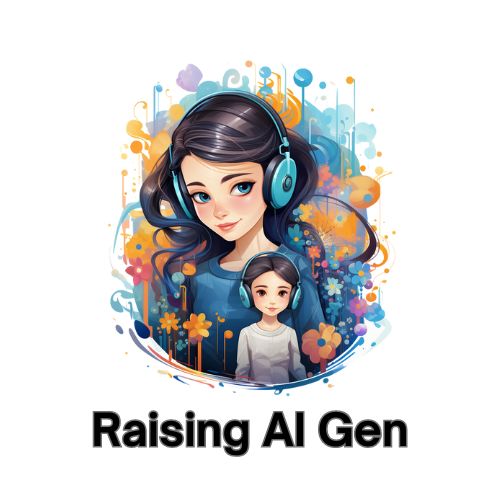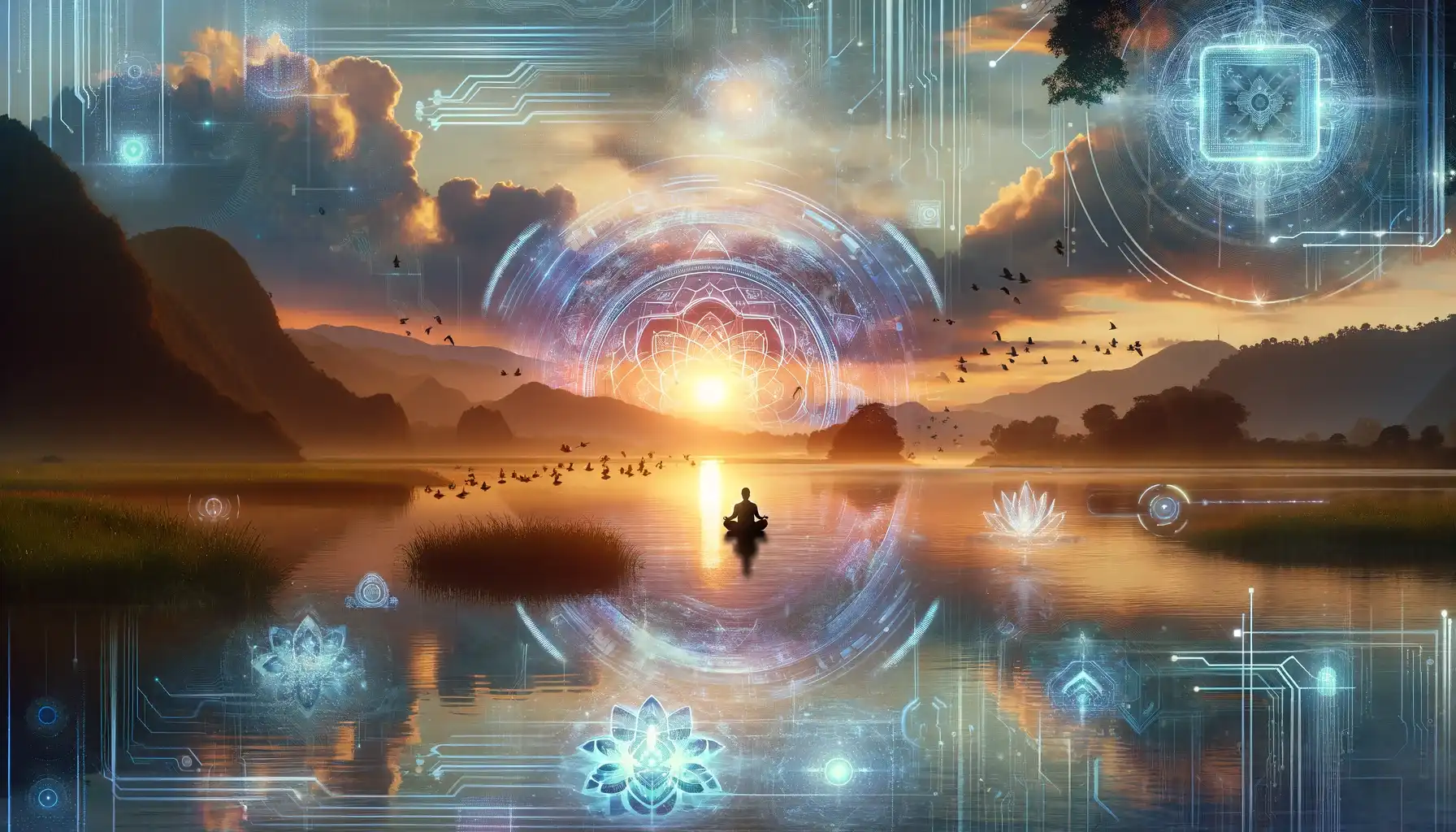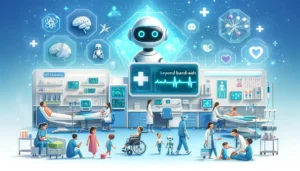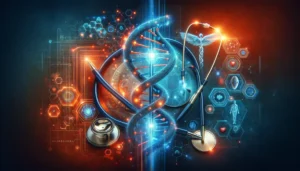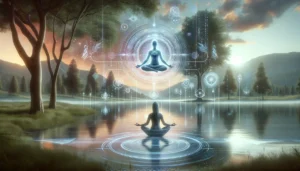In an era defined by technological ubiquity, the quest for connection encompasses not only our earthly interactions but also extends to our spiritual practices. The incursion of artificial intelligence prayer services into our sanctuaries of solace beckons a new paradigm. As we seek respite from the white noise of digital distractions, the rise of AI-powered prayer and mantras presents an opportunity to harmonize the timeless with the contemporary.
Indeed, in this pursuit, digital prayer platforms emerge as the sanctified nexus between the devout and the divine. Through a blend of algorithmic precision and human yearning, these platforms offer AI-enhanced spiritual experiences that cater to the individual’s quest for mindfulness and transcendence beyond the bustling din of day-to-day life.
Key Takeaways
- AI-enriched worship can modernize and personalize religious rituals for a diverse, tech-savvy generation.
- Digital prayer platforms offer a new channel for spiritual engagement, accessible anytime and anywhere.
- Through AI, mantras and prayers are delivered with a consistency and presence that supports continuous spiritual growth.
- AI-powered tools on these platforms can adapt to personal beliefs and enhance individual worship experiences.
- While leveraging technology, these AI platforms maintain respect for the essence of traditional spiritual practices.
The Intersection of Technology and Faith: AI-Powered Prayer and Mantras
As the digital revolution ventures into the sacred realms of spiritual observance, a blend of virtual prayer assistants and AI-guided spiritual practices is emerging at the crossroads of technology and faith. This fusion heralds a new epoch of religious experience, where machine learning prayer solutions and automated mantra recitation are reshaping the landscape of worship and devotion.
Revolutionizing Rituals: How AI is Transforming Spiritual Practices
The influence of AI on religious rituals is particularly evident in India, where the technologically-driven societal fabric embraces both the promise of modernity and the reverence for heritage. During the Ganpati festival, the integration of a robotic arm conducting the “aarti” marks a pivotal shift in the ceremonial tapestry. It’s a vivid depiction of how intelligent prayer and mantra apps are not only modernizing but also preserving the essential spiritual experiences.
AI-Guided Worship: Blending Automation with Religious Devotion
Across East Asia and South Asia, the utilization of religious robots and smart mantra chanting devices raises the curtain on the complexities of devotion in the digital age. While these advancements denote progress and adaptability, they incite a mix of optimism and skepticism among practitioners. They call into question the irreplaceable essence of human touch in religious practices and the potential implications of AI-powered prayer and mantras.
Merging Ancient Traditions with Modern Innovations
Notably, AI’s integration within spiritual contexts isn’t an abrupt departure from tradition but is connected to historical threads. Classical narratives and folklore heralding mechanized deities signal an unwitting presage to today’s AI-powered prayer services. These references from antiquity serve as compelling validations for embracing such innovations while igniting conversations about the delicate balance between technological ascendance and the fidelity to ancestral customs.
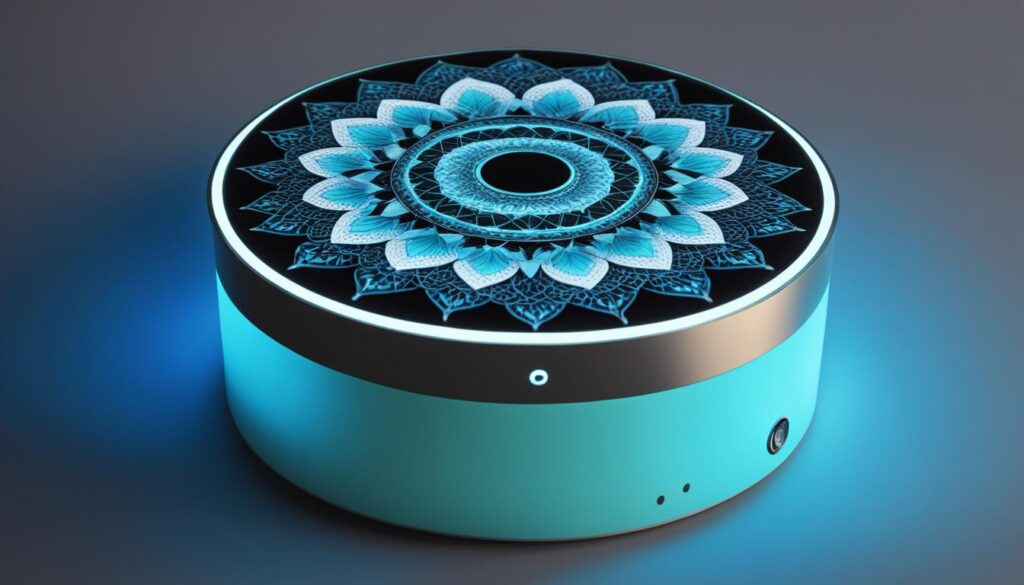
Evaluating AI’s Role in Spiritual Experiences: An Ethical Dilemma
The integration of artificial intelligence in religious contexts has sparked significant debate over the moral underpinnings of such innovations. At the heart of the controversy is whether ethical AI in spiritual practices serves as a boon or a bane to the essence of religious experiences. The employment of AI, particularly in the guise of robotic clergy like Mindar at Kyoto’s Kodaiji Temple, poses profound theological and societal questions.
Is there a sacredness inherent in objects animated by AI, pivotal enough to redefine the nature of worship? Can technology introduced in such intimate areas of human existence jeopardize the interpersonal connections that form the crux of many spiritual practices? The advent of AI-powered prayer and mantras compels us to contemplate not only their innovative potential but their resonance with the deeper tenets of faith.
- How AI-driven expressions of faith might alter the dynamics of communal worship and personal devotion.
- The impact of AI’s incorruptible perception on the uniquely human elements of worship, such as empathy and fallibility.
- The role that AI might play in either distorting or enhancing the ethical and liturgical actions prescribed in religious doctrines.
These advancements proffer an intense scrutiny into the dichotomy between persevering age-old orthopraxy and harnessing the precise, consistent executions promised by AI-powered religious applications.
Contrastingly, AI’s ability to deliver flawlessly recited prayers and rituals has introduced a paradigm where perfection in spiritual practices may overshadow the value of human-led religious observance. The following table presents a comparative glimpse into the ethical implications, potential benefits, and concerns associated with AI-driven spiritual aides.
| Aspect of Worship | Human-Led Practices | AI-Powered Practices |
|---|---|---|
| Emotional Resonance | Empathy and personal connection are core components | Potentially lacks the nuances of human emotion |
| Consistency in Rituals | Subject to human imperfection and variation | Promises precision and unwavering consistency |
| Ethical Implications | Preserves the sanctity and human touch in spiritual rites | Poses challenges in aligning with ethical standards of faith communities |
| Accessibility | May be limited by the availability of spiritual leaders | Enhances accessibility with 24/7 availability |
| Adaptability | Adapts to context and emotional state of congregants | AI adaptations rely on pre-programmed responses |
As we stand at this technological crossroads, it becomes imperative to balance innovation with the reverence for tradition, ensuring that ethical AI in spiritual practices enhances rather than detracts from the sacred journey of faith. It is the intersection of advanced technology with the ancient currents of belief that will determine the future trajectory of AI-powered prayer and mantras in our collective quest for spiritual fulfillment.
Embracing a Future of Intelligent Spiritual Assistance
As our world undergoes a profound digital transformation, it is essential to consider the resulting cultural impacts on religious practice. Integration of technology in faith-based activities, such as the use of smart mantra chanting and virtual prayer assistants, is not only altering the way we engage in worship but also contributing to a broader cultural shift. This intersection of the spiritual and the silicon presents an array of opportunities for enhancing religious experiences through nuanced, AI-powered practices.
Navigating the Digital Age: Smart Mantra Chanting and Virtual Prayer Assistants
Enter the age of the digital prayer platform: a realm where chanting a mantra or engaging in prayer no longer requires one’s physical presence in a sanctuary. With smart mantra chanting, adherents can now experience the rhythmic call of their faith, articulated through AI-powered prayer and mantras. These innovations not only reinforce the daily practices of individuals but also foster a sense of communal spirituality that can be accessed remotely. As a result, seekers and believers are aligning with this digital evolution, embracing virtual prayer assistants that guide their connection to the divine.
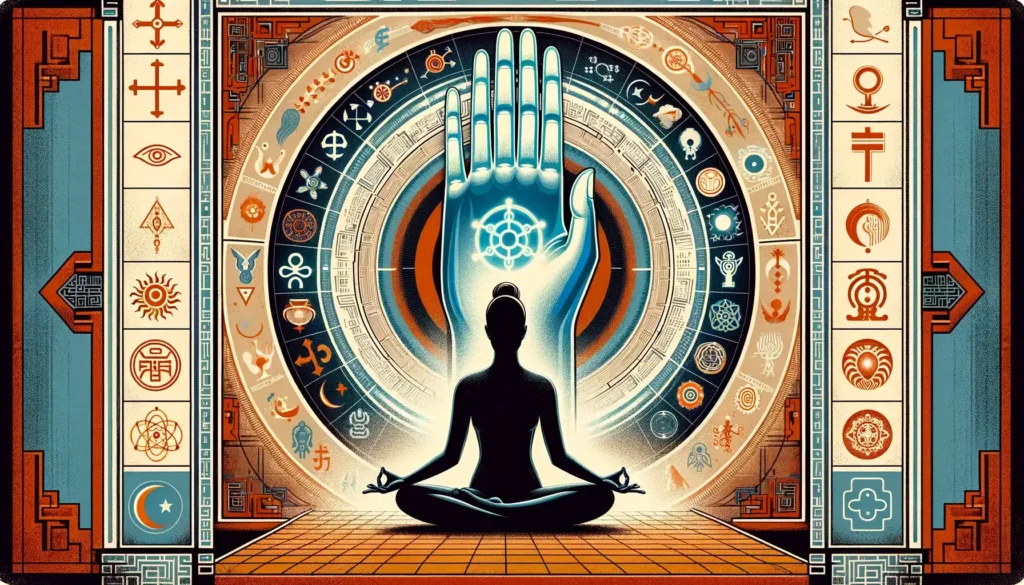
Cultural Paradigm Shift: Adapting to AI-Enhanced Religious Participation
Cultural adaptation in religious practice is a phenomenon that is not new, yet the integration of AI into such intimate spheres adds a novel dimension. Whether it’s a blessing from a robotic clergy or the soothing cadence of a mantra delivered electronically, technology is extending its reach into the domain of the sacred. This shift necessitates an open dialogue within communities, weighing the potential of AI-powered prayer and mantras to foster inclusivity and accessibility against the desire to preserve human-led religious traditions.
Machine Learning Prayer Solutions: The Promise of Personalized Spirituality
Simultaneously, the advent of machine learning prayer solutions marks the dawning of personalized religious experiences. These platforms do not merely recite prayers or mantras; they can adapt to the nuances of one’s spiritual journey, effectively providing a bespoke spiritual practice. This unique blend of age-old ritual with cutting-edge technology ushers in a future where guidance and solace may be dispensed algorithmically, crafting a sacred space that is both profoundly personal and expansively digital.
Frequently Asked Questions
| Question | Answer |
|---|---|
| What is an intelligent prayer? | Intelligent prayer refers to the use of AI technology to create personalized prayers based on individual needs and situations. These prayers are generated by algorithms that understand the user’s intent and context, offering a customized spiritual experience. |
| What is the difference between prayer and chanting? | Prayer generally involves a more personal, introspective communication with a higher power, often silent or spoken. Chanting, on the other hand, involves repetitive recitation of mantras or sacred phrases, typically in a rhythmic manner, and can be a communal activity. Both aim to foster a spiritual connection, but chanting often emphasizes the vibrational impact of sound. |
| How can I get prayer power? | Prayer power is often derived from the sincerity and intent behind the prayer, rather than the prayer itself. It involves a deep, personal connection with the spiritual or religious sentiment being expressed. Consistent practice, meditation, and a genuine heart can enhance the power of one’s prayers. |
| What is mantra prayer? | Mantra prayer involves the repetitive use of mantras – sacred words or phrases – during prayer. These mantras are believed to hold spiritual or mystical power and are used to focus the mind, achieve a state of meditation, or invoke divine blessings. |
| Can AI truly understand the nuances of spiritual needs? | While AI can generate content based on patterns and data, it may not fully grasp the complex emotional and spiritual nuances that are often intrinsic to prayer and mantra practices. AI tools are helpful in providing guidance and structure but may not replace the depth and understanding a human spiritual advisor or one’s personal spiritual intuition can offer. |
| How does AI-powered prayer adapt to different religious beliefs? | AI-powered prayer systems are often programmed with a wide range of religious texts and teachings. They use algorithms to match user preferences and requests with appropriate content from these sources. However, the effectiveness of AI in fully adapting to the nuances of different beliefs varies, and users may need to personalize the output further. |
| Is it possible to experience spiritual growth through AI-mantras? | AI-mantras can aid in spiritual practices by providing customized and accessible mantras. However, spiritual growth is a deeply personal journey and varies from individual to individual. AI can offer tools and resources, but true spiritual growth often requires personal reflection, practice, and a connection that goes beyond technological aid. |
Further Reading
| Title | Link |
|---|---|
| AI-Powered Spiritual Journaling | Read More |
| How is AI Used in Mental Health | Read More |
| Is There an AI for Mental Health? | Read More |
| AI in Education: Books | Read More |
| AI and Personalized Learning | Read More |
| AI for Autism: Tools and Resources | Read More |
| AI Tools for Teachers | Read More |
| Speech Therapy through AI: Innovations & Impact | Read More |
| AI for Language Learning: Revolutionizing Education | Read More |
